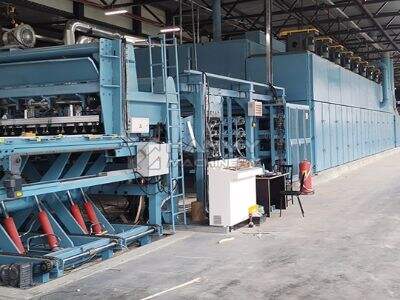One such type of wood that has multitudes of applications is plywood. It is created from the bonding of thin layers of wood. These thin layers are called veneers. Plywood makes so many things furniture, houses, and even large buildings. Plywood manufacture has changed a lot through the years. So, let's take a look at how plywood is manufactured in the present and how it has evolved.
How Plywood Was Made Long Ago
People used to make plywood by hand. That meant workers had to proceed with care and slow down. Each layer of veneer would then be individually glued very carefully to create a very strong piece of plywood. This was no easy task as each layer had to be carefully balanced and positioned. With time and advances in technology, new machines were created that made it a faster and easier process to create plywood.
Introduction of New Machines Boosting Plywood Production
Today, plywood factories use many high-tech machines that do various jobs. These machines can slice the wood into layers as thin as rag paper, glue those layers together and press them into flat sheets of plywood. And some machines can even sand the plywood so that it’s smooth and ready to use. That means plywood would be produced faster and more efficiently than ever. With these new machines, the production of plywood has sped up with a reduction in the cost and an overall greater improvement in the quality of the plywood.
How the plywood is made Wow. That is transformation.
Unlike modern plywood making, the methods used many years ago were very rudimentary. Now factories are lined with machines that can churn out hundreds of sheets of plywood in a single day. With each piece of plywood being made just right, these machines are controlled by computers. It is due to the new technology that has been developed in the plywood industry that this level of accurate and swift plywood production is possible.
Big Changes in Plywood Factories
In plywood factories, one of the changes is the use of automatic machines. These machines are capable of performing the work that previously required a lot of time for many workers to complete. They can: cut the wood, glue the layers together, press them down, and stack the finished sheets of plywood neatly. This has also sped up the process of making plywood much faster and automated, making it easier for companies to produce plywood, leading to the reduction of costs.
What the recent improvements in the production of wood plywood plywood have recently shown
For many decades,hydraulic hot press for plywood was produced more slowly and with more labor than it is today. Technological advancements have made the process faster and more cost effective, while also refining the quality of the plywood produced. Plywood today is stronger and more consistent than ever and much more versatile as it can be made to suit countless uses.
Finally, we have seen some real innovations in plywood manufacture over the years due to newer technology and increased reliability. One company this paradigm is Hanvy Machinery, and its machines are bringing a modern touch to the industry, paving the way for a better future in plywood production. As technology advances and modernizes, so will the plywood-making process. There are a lot of exciting products on the horizon that will benefit anyone who uses plywood.
 EN
EN
 AR
AR
 HR
HR
 CS
CS
 DA
DA
 NL
NL
 FI
FI
 FR
FR
 DE
DE
 HI
HI
 IT
IT
 JA
JA
 KO
KO
 NO
NO
 PL
PL
 PT
PT
 RO
RO
 RU
RU
 ES
ES
 SV
SV
 TL
TL
 ID
ID
 LV
LV
 LT
LT
 SR
SR
 SK
SK
 SL
SL
 UK
UK
 VI
VI
 ET
ET
 HU
HU
 TH
TH
 TR
TR
 MS
MS
 AZ
AZ
 BN
BN
 LO
LO
 LA
LA
 KK
KK
 UZ
UZ



